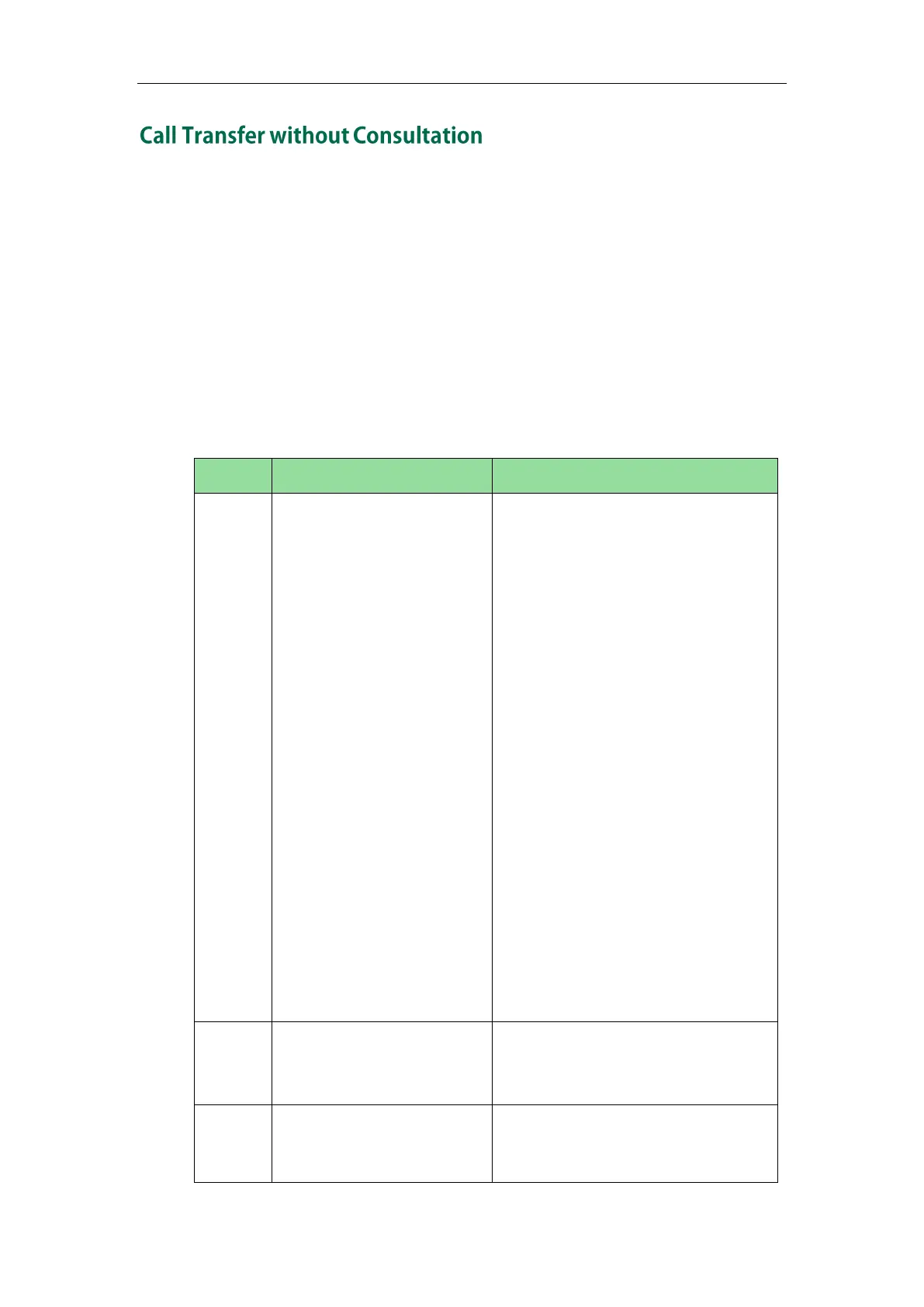Appendix
853
The following figure illustrates a successful call between Yealink SIP IP phones in which
two parties are in a call and then one of the parties transfers the call to a third party
without consultation. This is called a blind transfer. In this call flow scenario, the end
users are User A, User B, and User C. They are all using Yealink SIP IP phones, which are
connected via an IP network.
The call flow scenario is as follows:
1. User A calls User B.
2. User B answers the call.
3. User B transfers the call to User C.
4. User C answers the call.
INVITE—User A to Proxy
Server
User A sends an INVITE message to the
proxy server. The INVITE request is an
invitation to User B to participate in a
call session.
In the INVITE request:
The IP address of User B is inserted
in the Request-URI field.
User A is identified as the call
session initiator in the From field.
A unique numeric identifier is
assigned to the call and is inserted
in the Call-ID field.
The transaction number within a
single call leg is identified in the
CSeq field.
The media capability User A is
ready to receive is specified.
The port on which User B is
prepared to receive the RTP data is
specified.
INVITE—Proxy Server to User
B
The proxy server maps the SIP URI in the
To field to User B. The proxy server
sends the INVITE message to User B.
180 Ringing—User B to Proxy
server
User B sends a SIP 180 Ringing response
to the proxy server. The 180 Ringing
response indicates that the user is being
